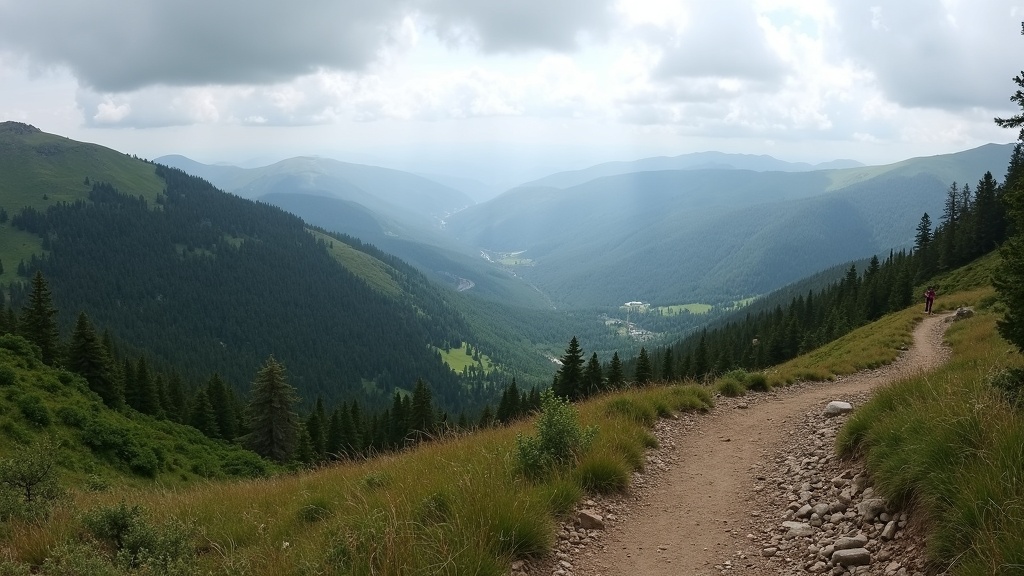Preparing For Mammoth March
Mammoth March events have become really popular among hikers and outdoor adventure fans. If you’re not familiar, a Mammoth March is a long distance hiking challenge, usually around 20 to 30 miles in a single day, hosted in scenic parks and trails. It isn’t a race but a personal challenge to finish the course within a set time limit, often 8 to 12 hours. Getting ready for such a demanding hike takes a good balance of training, planning, and the right gear. I’ll share what has worked for me and what you should keep in mind when preparing for a Mammoth March.

What Makes Mammoth March Stand Out
Mammoth March events are all about pushing your limits while soaking in beautiful surroundings. You follow clearly marked trails with aid stations along the way, and there’s a supportive, encouraging vibe throughout the challenge. Since finishing (not winning) is the goal, people of different skill levels can take part.
The Mammoth March series is inspired by hiking endurance traditions in Europe and the US, attracting everyone from new hikers looking for their first ultradistance event to experienced trekkers. According to the official Mammoth March organization, thousands sign up every year, turning these hikes into a growing community experience. You don’t need to be an ultramarathoner to enjoy it, but a bit of prep goes a long way toward making sure you have a good day instead of just struggling.
Getting Ready for the Distance
Completing a Mammoth March is just as much about mental determination as physical training. Building up your hiking stamina is key if you want to avoid blisters, soreness, and crashing halfway through. Here’s how I approach training:
- Weekly Hike Practice: Start with shorter hikes and gradually increase your mileage each weekend. Aim for at least one long hike a week, slowly working toward the target distance.
- Terrain Variety: Try to train on terrain similar to what you’ll find at the event. If the route features steep hills, stone steps, or gravel paths, plan training hikes to match those.
- Back to Back Days: As your event gets closer, practice hiking long distances on consecutive days. This helps with muscle conditioning and getting used to performing when tired.
- Pacing Yourself: During training, pay attention to your speed. Find a sustainable pace you can keep for hours, rather than burning yourself out early.
Mix in some basic strength exercises, such as lunges, squats, and core work, to build up your muscles and support your joints. Training hikes in the shoes and gear you’ll use on the day make a big difference in comfort and confidence. Also, consider incorporating stretching or yoga on rest days to keep muscles limber and help with recovery, which can further get you prepared to take on the distance.
Packing for Success: The Mammoth March Essentials
Having the right gear can be a total game changer on a long march. Based on my experience and advice from seasoned hikers, these items are worth packing:
- Proper Footwear: Invest in trail runners or lightweight hiking boots with good grip. Make sure they’re well broken in before event day.
- Merino Wool Socks: These help reduce blisters and wick moisture away from your feet.
- Hydration Pack or Bottles: A hydration reservoir makes it easy to sip as you hike. Carry enough water to last between aid stations, and consider adding electrolyte tablets.
- Weather Appropriate Clothing: Dress in lightweight, quick dry layers. Check forecasts and be prepared for sudden weather changes with a packable rain jacket.
- Snacks and Energy Foods: Bring a mix of bars, nuts, dried fruit, and salty snacks for steady energy.
- First Aid Kit: Throw in a few essentials like blister plasters, bandages, pain relievers, and any medications you need.
- Lightweight Trekking Poles: These can save your joints on steep uphills and downhills, especially as fatigue sets in later in the march.
- Navigation Tools: Even though trails are marked, I always keep a trail map or GPS app handy as a backup.
- Sun Protection: A hat, sunglasses, and sunscreen help protect you over several hours in the open.
Packing smart and light is really important, so avoid stuffing your pack with too many “just in case” extras. Test all your gear on training hikes so there are no surprises once you’re out on the trail for hours at a time. Having your essentials organized in smaller pouches or ziplocks makes it easier to grab what you need without digging through your whole pack, another tip I’ve found makes a difference in the moment.
Key Challenges You Might Face
No matter how well you prepare, Mammoth March hikes can surprise you with unexpected obstacles. Here are some common hurdles and tips for tackling them:
- Blisters and Foot Pain: Keeping feet dry, using quality socks, and adjusting your lacing can prevent a lot of issues. Take care of hot spots early—stop and tape them before they turn into blisters.
- Chafing: Anti chafe sticks or creams can make a big difference, especially in warm weather or rainy conditions.
- Staying Hydrated: Dehydration sneaks up on you. Take small sips often, and pace your water intake between aid stations.
- Keeping Up Energy: Eat something small every hour, mixing carbohydrates and salty snacks to avoid energy crashes and cramps.
- Weather Changes: Carry a compact shell jacket for sudden rain or wind. Having dry socks or a buff can also make unexpected weather more bearable.
- Mental Fatigue: Breaking the hike into smaller milestones and chatting with other participants helps keep motivation up. When I start to feel tired, I focus on reaching the next aid station, not the distant finish line.
Acting fast with practical solutions and keeping a positive mindset goes a long way when things get tough. Most small problems can be managed if you address them quickly instead of hoping they’ll just disappear as you keep walking.
Blisters and Foot Soreness
One of the top reasons hikers drop out of Mammoth March is sore, damaged feet. Learning how to tape your feet, choosing socks wisely, and trimming your toenails ahead of time are small habits that make a big difference. I always pack a couple of different blister tapes so I can adjust as needed during the hike. Some people also find that foot powders or anti friction balms help keep their feet comfortable over the miles, so experiment during training to see what works for you.
Energy Management
Pacing and steady snacks keep energy levels stable. Skipping breakfast or waiting until you’re hungry is never a good idea. I aim for a snack every 60 to 90 minutes and rotate between sweet and savory foods to avoid getting tired of one flavor. Using hydration mixes that include some calories can also help keep your energy up, especially during big climbs.
Pro Tips for Conquering Mammoth March
Finishing a Mammoth March feels pretty awesome, especially if you’ve done your homework. Here are some extra pointers from my hikes and the community:
Learn the Course Layout: Familiarize yourself with the course map, terrain, and major climbs, so you can mentally prepare for the toughest sections.
Perfect Your Layering: Even the best forecast can be off. Test your layering system in training so you’re ready for heat, cold, or sudden rain.
Change Socks and Reapply Lube: Fresh socks at the halfway mark can work wonders. A quick break to reapply anti chafe balm helps too.
Buddy Up: Tackling tough miles with a friend can make the time pass quickly. Even if you show up solo, chatting with people you meet along the way builds a real sense of camaraderie.
Respect Your Limits: Listen to your body. Slowing down or taking extra breaks is always better than pushing to the point where you can’t finish. No two Mammoth March hikes feel exactly the same, so adapt as you go.
Keep those tips in mind, and you’ll set yourself up for a way more enjoyable (and successful) experience. Another bonus tip: bring a small pack towel or bandana; it’s handy for wiping sweat, cleaning hands, or even as a makeshift seat during breaks.
The Basics: What to Focus on When You’re Just Starting Out
If you’re new to endurance hiking events, the thought of trekking 20 or more miles in a day might seem daunting. Sticking to the basics is super important. Here’s where I’d recommend focusing your attention:
- Start Small: Gradually increase your hiking distance every week in the lead up to the event.
- Break In Gear: Wear everything—shoes, socks, hydration pack—on your training hikes to work out any potential annoyances.
- Hydrate Early: Start drinking water days before the event so your body is ready from the start. Don’t just rely on last minute hydration the morning of.
- Get Sleep: A full night’s sleep before event day makes a huge difference in how easy the miles feel.
Focusing on these basics can help beginners finish strong and truly enjoy the experience, rather than just survive it. If you’re feeling anxious, remember that everyone started somewhere, and most Mammoth March participants are friendly and supportive, ready to offer tips if you ask on the trail.
Frequently Asked Questions
Here are some common questions from people thinking about signing up for a Mammoth March:
Question: Do I need to be an ultra athlete to finish a Mammoth March?
Answer: Not at all. Anyone with a baseline of fitness and a bit of training can get through. Start training early, and don’t be afraid of slower paces or extra breaks. It’s all about the personal challenge, not the competition.
Question: What’s included at aid stations?
Answer: Most events offer water, electrolyte drinks, fruit, and basic snacks. Some have medical staff and facilities for minor first aid. Still, bring your own supplies just in case, as you may need something specific like your favorite snack or tape for blisters.
Question: Can I use hiking poles?
Answer: Yes; hiking poles are allowed and can make a big difference, especially on technical or hilly courses. Just practice with them beforehand to make sure you’re comfortable.
Final Thoughts
Preparing for Mammoth March makes the difference between a tough grind and a memorable adventure. With consistent training, smart gear choices, and knowledge of how to handle on trail challenges, you’ll be well equipped to tackle the distance and enjoy every mile. Whether you’re doing it to meet new people, push your limits, or just take in nature for the day, getting to the finish line is a seriously rewarding feeling. Set your goals, plan your prep, and you might just surprise yourself with how much you can accomplish. The Mammoth March community keeps growing, so after you finish one, you might find yourself inspired to join more events and keep the adventure going!

Leave a Reply